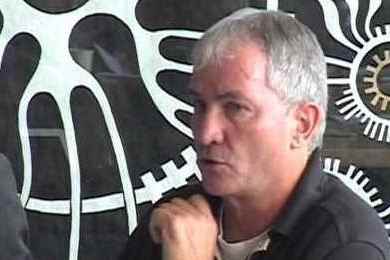The models that announce the future climate are unequivocal: it will heat up. To avoid the climate disaster of a rise above 2°C, curbing greenhouse gas emissions has become a necessity. But will we really succeed in doing without coal, oil and natural gas?
Posted at 5:00 p.m.
Will the carbon neutrality that we are aiming for be sufficient to readjust the planetary thermostat by 2050 when the population, food needs and consumption will increase? What role could solar, wind, bioenergy, nuclear and hydrogen take in the necessary energy and ecological transition? […]
The civilization of petroleum and the combustion engine is a huge ocean liner that began its journey more than 150 years ago when John D. Rockefeller laid the foundations of the petroleum industry. It has continued to get heavier over time. Turning the tide is no small feat. The inertia is considerable. Stopping this boat to move on to another form of civilization will require a lot of time and a lot of work. […]
With hindsight, we can think that the 2°C threshold proposed in the last century corresponded to a realistic objective in the sense that humanity had enough time to accomplish an energy transition. Furthermore, the transition scenarios based on the use of the atom were documented and accepted by the scientific community. […]
Three factors have reduced the chances of becoming carbon neutral in 2050. First, industrialized countries have failed to meet their Kyoto commitments. Secondly, we had not foreseen the dazzling emergence of China from the year 2000, then that of India. In 2020, these two countries alone accounted for 36% of global CO2 emissions2, and they intensify. Third, the context has changed. The “not in my backyard” has been imposed for all renewable energies including hydroelectricity. Natural gas has been classified as a cursed energy and nuclear power is no longer part of the equation. As a result, the projections of the 1990s quickly became obsolete. And our 2°C measurement too.
In 2022, 25 years later, time is running out. The rise in temperature will shortly reach 1.5°C. Thus, the 2°C objective is now utopian, especially since GHG emissions are not slowing down at all. […]
The entropic heritage of oil is gigantic. […]
This is the main reason that leads me to conclude that the 2°C target is improbable, and even more so than the 1.5°C one. Another reason prompts me to be cautious in the face of a zero-emission socio-economic system within 30 years. Some technologies are not commercialized, at least not in sufficient quantities to meet demand. This is the case of hydrogen fuel cells for trucks or green hydrogen for industrial processes. […]
By doubting carbon neutrality for 2050, this book does not aim to trivialize climate change. On the contrary, you have to get to work and adopt a more achievable, more realistic goal. […]
Climate models give us a very incomplete picture of what will happen by 2100. These are complex software programs that do not yet cover all of the land-ocean-atmosphere interactions. For this reason, our leaders must continue to support researchers working in climate modeling.
These models are flawed for another reason, which is that temperature increases greater than 1.2°C over the industrial era have not yet been experienced. As new data becomes available, several relationships will be improved. In particular, attention will need to be paid to the natural carbon sinks of land and oceans, an important component for improving models. The melting of glaciers and permafrost is another parameter to be closely monitored. […]
Climate change will have serious impacts for most communities around the world. Rising sea levels, increased risk of floods or storms, more frequent droughts are just a few examples of unpleasant, costly and dangerous climatic manifestations.
It’s up to public safety to prepare, to provide mitigation, to regulate, and so on. This field of research is multidisciplinary. In Quebec, the major asset of the Ouranos consortium is to have integrated society’s adaptation to climate change into its research program. Quebecers should be grateful to its founders for adopting this avant-garde vision.
Climate science has several aspects that should be funded. But we must also understand that society will have to radically change the way it lives.

The carbon neutral illusion – What will the weather really be like after 2050?
Gaetan Lafrance
Editions Multimondes, April 2022
236 pages
Who is Gaëtan Lafrance?
Holder of a doctorate in engineering, Gaëtan Lafrance made a career as a full professor at the National Institute for Scientific Research. He is one of the few experts in the field of energy forecasting. Thanks to his work on hydro-wind coupling and on estimating wind resources in coastal environments using satellite technology, he received the JE Rankin Prize from the Canadian Wind Energy Association. He is notably the author of Energy bulimia, suicide of humanity? (2002), Living after oil – Mission impossible? (2007) and What future for research? (2009), Editions Multimondes.
